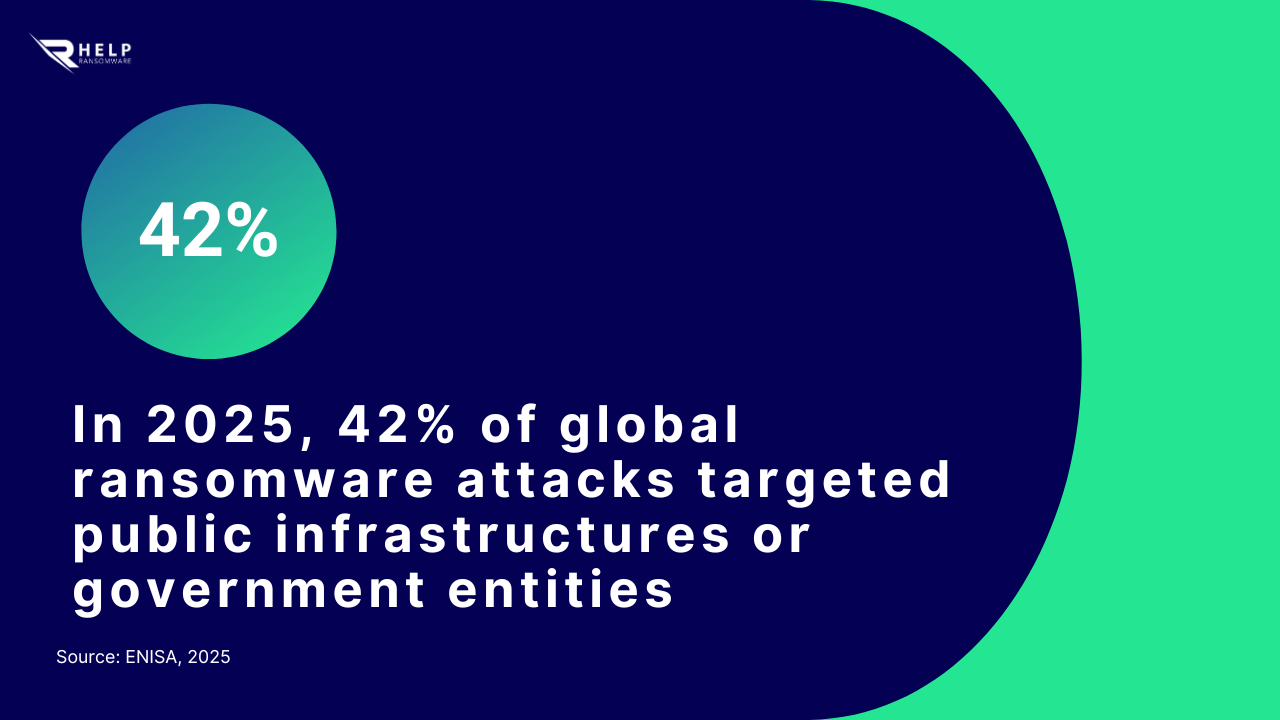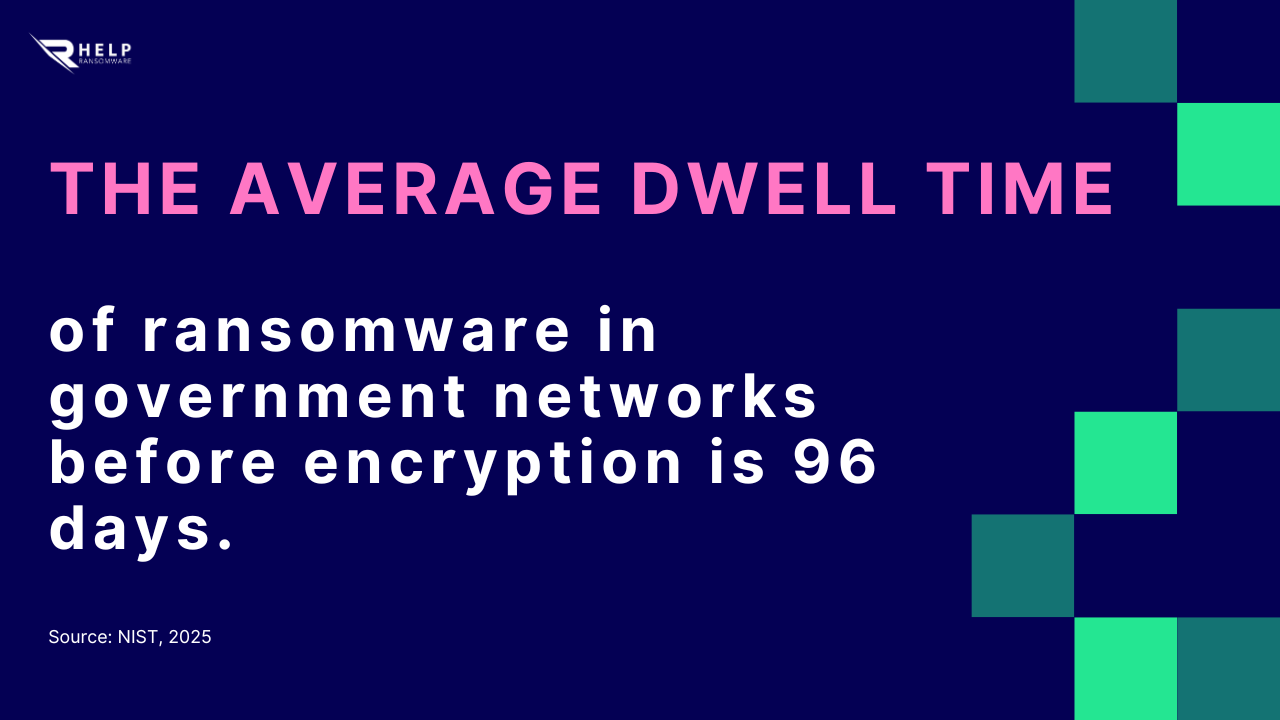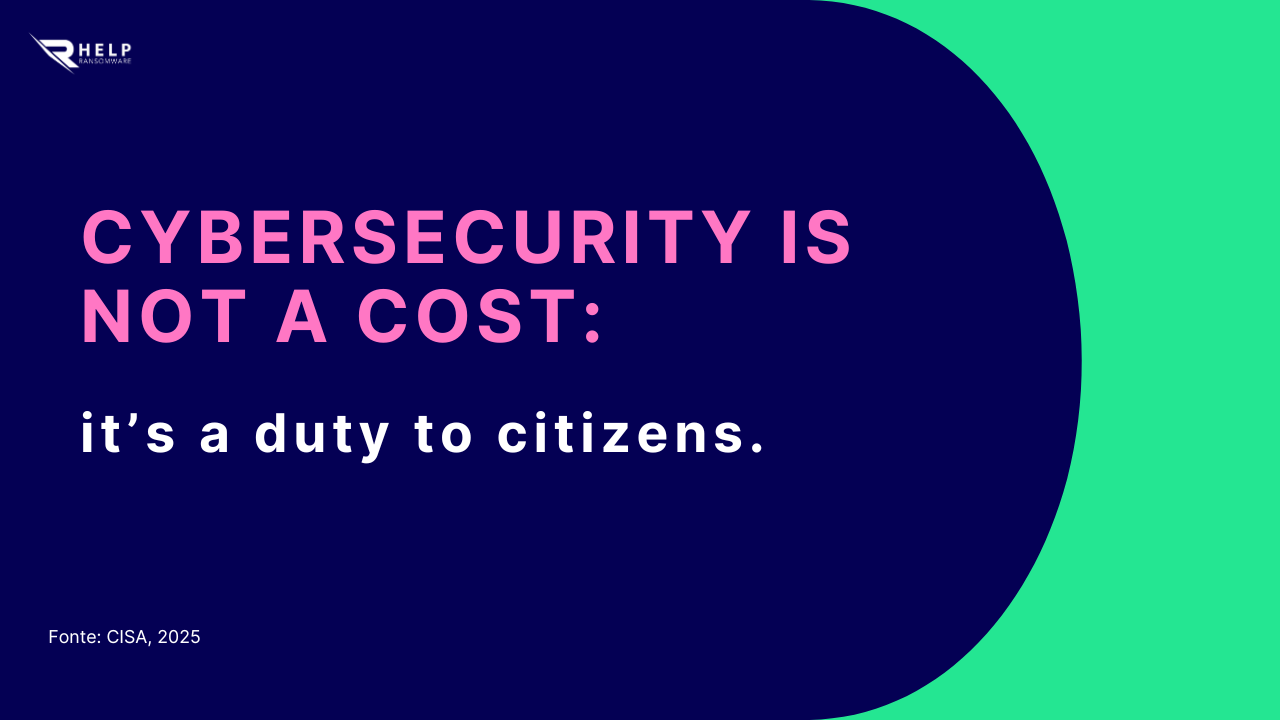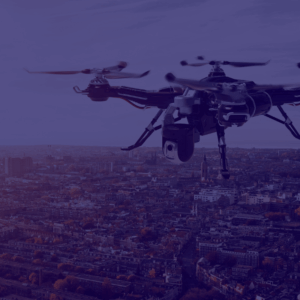Over the past five years, ransomware has evolved from a corporate nuisance into a geopolitical weapon. Public institutions — ministries, municipalities, hospitals, universities, and even law enforcement — are now among the primary targets of organized cybercriminal groups. The reason is clear: attacking a government means attacking the trust of its citizens.
According to the ENISA Threat Landscape Report 2025, ransomware attacks against government agencies and public administrations have increased by 63% compared to the previous year. These incidents are not mere data thefts — they are deliberate operations of disruption and destabilization that can paralyze tax systems, shut down public registries, wipe judicial databases, and halt emergency services.

Europe and the Americas have witnessed cases so severe that a single compromised password or a misplaced click has triggered a national crisis. The 2024 attack on France’s Ministry of Justice and the 2023 incident on Costa Rica’s health system are stark examples — both forcing governments to declare states of digital emergency.
What Is Government Ransomware and Why It Is So Dangerous
Ransomware is malicious software that blocks access to systems or data until a ransom is paid. But when the victim is a government, the consequences go far beyond economics. Attackers aim to cripple administrative continuity, disrupt essential public services, and erode trust in institutions.
The most active criminal groups
According to CISA, some of the main groups responsible for such attacks include LockBit, BlackCat (ALPHV), and Play Ransomware. They operate globally with corporate-like infrastructures and follow the double extortion model, stealing sensitive data before encrypting it and threatening to release it if payment is refused. This dual pressure — financial and reputational — amplifies their leverage.
Andrea Baggio, CEO of HelpRansomware, explains:
“When ransomware strikes a public institution, the damage extends far beyond technology. It’s an attack on citizens’ trust, on administrative stability, and on the credibility of the state.”
Cybercriminals do not choose governments because they are weak, but because they are visible. Striking a public network generates panic, media attention, and political pressure — the perfect environment for extortion.

Immediate Ransomware Help
Don’t let ransomware hold your business hostage. Our experts are ready to recover your data and secure your systems.
How a Ransomware Attack Begins
Ransomware campaigns targeting governments rarely erupt suddenly. They evolve silently over weeks or even months, following a methodical infiltration process. Before encryption or ransom demands occur, attackers invest significant time identifying weak points and exploiting human vulnerabilities as much as technological ones. In this phase, ransomware is not just a tool — it’s a strategy of deception and timing.
The Silent Entry and the Human Factor
Almost every ransomware attack starts with a simple human mistake — a wrong click. A well-crafted phishing email, disguised as a message from a supplier or another government department, convinces the recipient to open an attachment or share credentials. The National Cyber Security Centre (NCSC) confirms phishing remains the most common entry vector for government breaches.
Once inside, attackers quietly explore the network, escalate privileges, and map out critical systems. The malware often lies dormant for weeks, gathering intelligence and identifying the best targets. This waiting period — the dwell time — allows the attackers to maximize impact and ensure total paralysis once they strike.
From Breach to Paralysis
When the operation is ready, the ransomware activates simultaneously across multiple systems, encrypting files and locking access to essential data. In a matter of minutes, entire departments can be frozen, disrupting key administrative and public functions.
Soon after, the attackers issue a ransom demand, often including proof of data theft to increase pressure. According to the NIST, the average dwell time of ransomware in government networks before encryption is 96 days — clear evidence that these are well-planned, persistent operations rather than opportunistic crimes.

Detecting and Containing the Attack
The ability to detect anomalies early can make the difference between containment and collapse. Suspicious network activity, unauthorized access attempts, or sudden deactivation of backups are often the first signs of infiltration.
Governments must implement continuous monitoring systems like SIEM and EDR solutions capable of recognizing behavioral anomalies and alerting security teams in real time. Once an attack is confirmed, infected systems should be isolated — not shut down — to preserve forensic evidence.
The immediate response
The NIST Cybersecurity Framework emphasizes the importance of structured response protocols and coordinated communication between IT departments and national cybersecurity agencies. In this critical phase, the expertise of HelpRansomware becomes essential: the company provides immediate containment procedures, threat analysis, and recovery planning for public infrastructures.

Immediate Ransomware Help
Don’t let ransomware hold your business hostage. Our experts are ready to recover your data and secure your systems.
Activating the Response Plan and Managing the Crisis
A government’s best defense against ransomware is preparation. Every institution should have a detailed Incident Response Plan outlining responsibilities, escalation procedures, and communication channels. This plan must be tested regularly and updated as new threats emerge.
Juan Ricardo Palacio, CoFounder & CEO America of HelpRansomware, stresses:
“No institution can withstand a ransomware attack without a clear, pre-tested plan. Resilience is not built in the middle of a crisis; it’s built long before it.”
Timely and transparent communication is equally crucial. Concealing a cyber incident can cause long-term reputational harm. Increasingly, governments are adopting controlled disclosure policies to inform the public responsibly and coordinate with cybersecurity agencies for a unified response.
Recovery and Post-Incident Analysis
Recovery is not just about restoring access to data; it’s about ensuring the system’s integrity and preventing recurrence. Backups are the cornerstone of resilience but must be air-gapped, frequently tested, and shielded from automated overwrites. Modern ransomware often searches for and deletes backup files to prevent recovery.
HelpRansomware assists public entities in recovering encrypted data using forensic and decryption methodologies designed to restore functionality without paying the ransom.

Continuous improvement
Once services are restored, a post-incident review must follow. This involves reconstructing the attack timeline, identifying exploited vulnerabilities, and updating security policies. The NCSC recommends conducting penetration tests at least twice a year and regular phishing awareness training for staff — the first and most critical line of defense.
Conclusion: Protecting Public Trust
Cybersecurity has become an essential pillar of modern governance. When a ransomware attack hits a government, it doesn’t just compromise data — it threatens the continuity of public life.
HelpRansomware works alongside public institutions worldwide to prevent, respond to, and recover from ransomware crises. Its mission is clear: to strengthen public trust through digital security, ensuring that no government faces this threat alone.
Frequently Asked Questions (F.A.Q.)
They manage critical infrastructure and sensitive data. Disrupting public services creates chaos and political pressure, giving attackers leverage.
Healthcare, justice, and local administrations — often due to outdated systems and limited cybersecurity budgets.
No, but proactive monitoring, regular training, and isolated backups can drastically minimize risk.
It provides immediate technical response, recovers encrypted data, and develops long-term resilience strategies.
Underestimating the human factor, delaying updates, and neglecting to test offline backups.
Absolutely. Vendors are often the weakest link and must meet the same security standards as the public agencies they serve.



